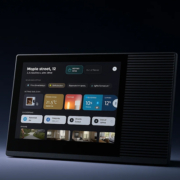What New Features Can We Expect in Smart Home Control Panels in the Coming Years?
Smart home control panels are rapidly evolving, transforming from simple switch panels into powerful, AI-driven hubs that manage lighting, security, energy, entertainment, and more. As the demand for smarter living increases, we can expect the next generation of control panels to bring greater intelligence, integration, and personalization.
Here are the top features likely to shape the future of smart home control panels:
1. AI-Powered Personalization and Predictive Automation
Artificial Intelligence will play a central role in delivering a personalized user experience. Future control panels will learn your habits—such as preferred lighting levels in the evening or morning thermostat settings—and automatically suggest or activate actions accordingly.
Portworld’s Android-based panels are already designed for AI algorithm integration, enabling smart scene learning, usage pattern recognition, and predictive routines.
2. Voice Control with Built-in Assistants
While external voice assistants like Alexa or Google Assistant are common, upcoming smart panels may come with built-in voice assistants, allowing users to control the entire smart home through natural voice commands without needing a separate device.
Panels integrated with microphones and speakers will offer seamless, room-wide voice interaction—a feature that Portworld is actively exploring for future iterations.
3. Multi-Protocol and Matter Compatibility
The Matter standard is gaining traction as a universal protocol for interoperability among smart devices. In the coming years, most control panels will support Matter, alongside Zigbee, Z-Wave, KNX, and Wi-Fi, making it easier to connect and manage devices from different brands.
Portworld smart home control panels support modular protocol integration and are prepared for Matter adoption through firmware upgrades and SDK extensions.
4. Advanced Touchless & Gesture Control
Gesture recognition will allow users to control devices with a wave of the hand—ideal for kitchens, bathrooms, or accessibility use cases. Integration with mmWave radar or 3D sensing cameras will make this a more natural and hygienic interaction option.
Future versions of Portworld panels may incorporate touchless technology for public and high-end residential environments.
5. Enhanced Security and Biometrics
Security is at the heart of smart home systems. Upcoming panels are likely to integrate biometric authentication, such as facial recognition or fingerprint scanning, to manage access control, user-specific scenes, or parental restrictions.
Portworld panels already support NFC, RS485, and GPIO, and are developing biometric module integration to enhance smart building and hotel security use cases.
6. Edge Computing and Local AI Processing
To reduce latency and reliance on the cloud, future panels will perform more computations locally. This means faster responses, improved privacy, and continued functionality even during internet outages.
With powerful processors like RK3566/RK3588, Portworld’s smart home control panels are ideal for AI edge computing scenarios with real-time scene recognition, voice processing, or offline control.
7. Dynamic and Customizable User Interfaces
More advanced UIs will enable users to customize layouts, themes, and widgets, adapting the control panel to different rooms (kitchen vs. bedroom), users (kids vs. adults), or time of day. Dynamic dashboards with energy usage graphs, indoor air quality data, or weather updates will be standard.
Portworld’s open Android system supports full UI customization, branding, and application development, enabling partners to build tailor-made user experiences.
8. Sustainable & Energy-Efficient Design
As sustainability becomes a global priority, control panels will incorporate energy-saving modes, solar-ready support, and green material designs. Smart scheduling and energy reports will help homeowners optimize electricity usage and reduce carbon footprints.
Portworld plans to integrate energy monitoring and eco-friendly design options into future hardware for green smart homes and commercial spaces.
9. Modular Expansion and Interoperable Hardware
Next-gen panels will offer modular hardware—allowing integrators to add PoE, RS232, LTE, or even battery backup modules based on the project needs. This increases deployment flexibility for smart homes, hotels, hospitals, or office buildings.
With Portworld’s OEM/ODM hardware customization service, you can choose interface layouts, panel sizes, and expansion modules tailored to your business or project requirements.
10. Integration with Augmented Reality (AR) and IoT Dashboards
In the long term, smart panels may display AR-based room overlays, helping users visualize device locations, diagnose faults, or manage automation flows in real-time. Combined with cloud-based IoT dashboards, users and administrators will gain unprecedented control and visibility.
Portworld’s ecosystem is built with future expansion in mind, supporting web dashboards, IoT visualization tools, and remote diagnostics across Android/Linux-based platforms.
The Future is Flexible, Intelligent, and User-Centric
Smart home control panels are no longer just fancy touchscreens—they are evolving into intelligent control centers that adapt to the user’s needs, learn behaviors, and manage increasingly complex automation ecosystems with ease.
With Portworld’s commitment to innovation, modular design, and full-stack OEM/ODM customization, you can be confident that your smart control solutions are ready for the next wave of technological advancement.








